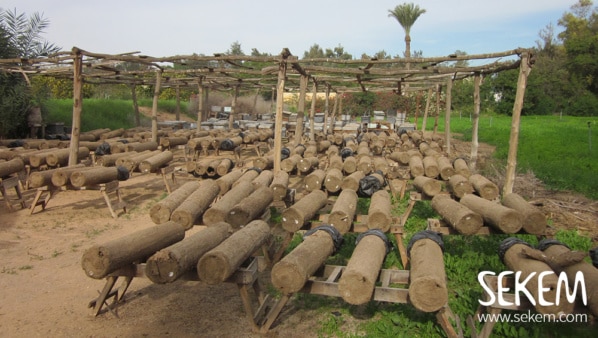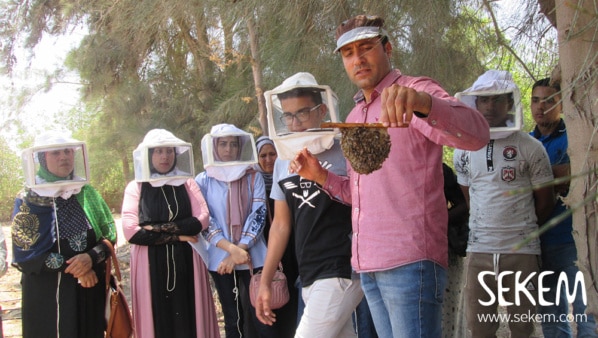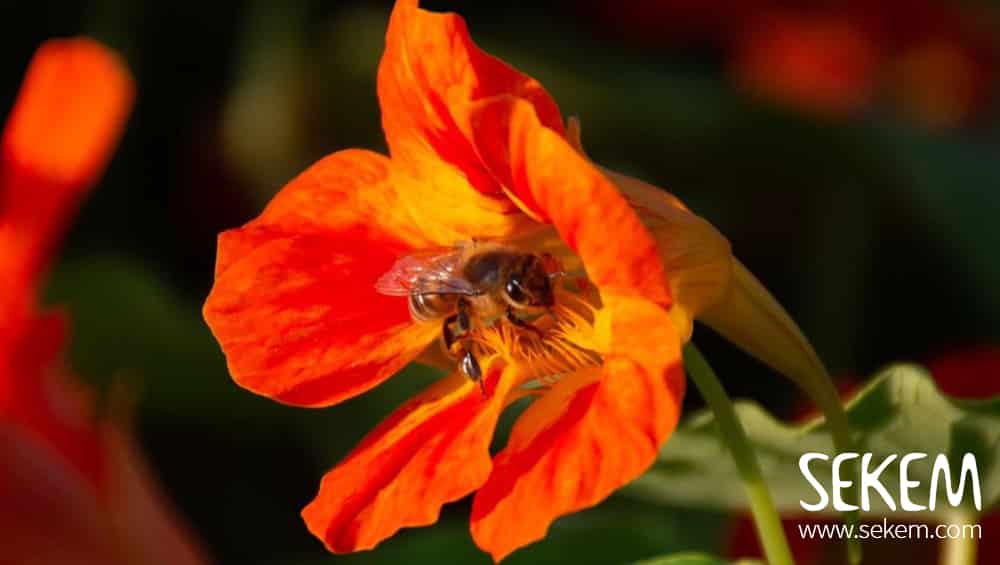Angela Hofmann: Saving the Bees Project
In 2007 Angela Hofmann under SEKEM Initiative and alongside SVG8 launched her first beekeeping project focused on protection and spread of honey bees in Egypt. When asked why she decided to start it despite having no previous background in this field she simply answers: “Anyone who works in the agricultural sector sees the connection between bees and the yields. Every farmer knows that bees are one of the most important components of our ecosystems”
Why are Bees Disappearing?
In the past decades the world faced a significant decline in bee population, caused by a number of different factors. The world’s largest killer of honey bees is Varroa destructor, a parasite that attacks and feeds on the bees, while spreading viral infections among them. Another major contributor to the bee extinction are neonicotinoids and other pesticides that are widely used in conventional agriculture. These chemicals are absorbed by plants and, when bees get in contact with them, damage their nervous system.
Why is bee extinction so alarming? According to the United Nations Environment Programme, 71 out of the 100 crop varieties are pollinated by bees. It means that extinction of bees will have a devastating ripple effect at the global level: disappearance of plant species will lead to disturbance in the animals food chain and our own food security, which will eventually result in another economic crisis. The Southwest district of China has already experienced the impact of the bee’s shrinking, caused by the intensive use of agrochemicals. Apples and pears orchards there are now polinated manually by farmers. As one can imagine it is a long and tedious process, where each blossom needs to be individually pollinated with a small brush. It requires a lot of time and physical effort from the labor and is not even close as effective as natural pollination.
Bees in Ancient Egypt
Egypt is familiar with bee breeding from the times of Pharaohs. Ancient legend tells us that bees were born from the tears of Re, one of the creator gods of ancient Egypt, which shows us how much bees were appreciated back then. Honey was used as a natural sweetener (as no sugar existed back then) and a medicine. It was available only for the rich and was always in high demand. Because of harsh climate conditions, the native Egyptian honey bees had a high immune system and did not require much care from the beekeepers. This species was rediscovered in the 20th century by scientists and named Apis mellifera lamarckii, after a French naturalist Jean-Baptiste Lamarck. Beside temperature resistance and high efficiency in pollination, Lamarckii appeared to be also resistant to Varroa destructor, which is an extremely important trait for bees.

“Apis mellifera lamarckii”
However, Lamarckiis are low in honey yield, compared to the European species. For this reason in the 1980s Carnica honey bees were introduced to Egypt to be crossed with Lamarkiis. The idea was to enhance the benefits of both species and breed evolved colonies that are high in honey production and able to withstand the desert climate. However, due to the poor management and neglect, the cultivated hybrid had a weak immune system and required a high amount of medications to survive and produce honey. The mistake caused a decline in populations of pure Lamarkiis in Egypt with a threat to lose these species completely.
Project of Angela
The project of Angela was a collaboration between EBDA and German Demeter beekeeper Günter Friedmann. In the first years they were focusing only on improving the overall state of the hybrid species by breeding new healthy colonies, until Gunter suggested Angela pay a special attention on finding and breeding the pure Lamarckiis, which were on the edge of extinction.
“It was a challenge to find pure Lamarckii colonies,” Angela recalls. “The main problem was that Lamarckiis were still bred in long mud tubes, which are traditional Egyptian beehives. Operation of these hives is difficult and requires a special knowledge. Besides, Lamarckiis are a little more aggressive than other species of honeybees and for this reason young beekeepers do not like them. Collection of honey from the Lamarckiis require too much effort and in the end the low honey yield is not that rewarding”

“Traditional Lamarckii bee hives”
The difficulties in hives operation resulted in a huge decline of the Lamarckiis population. In 2009 Angela and EBDA discovered 100 000 colonies of Lamarckiis in Assyut and Aswan areas, but the population has already been on a downturn. Farmers were abandoning colonies, preferring the European species, which were easier to operate and produced more honey. Nowadays there are roughly 1000 colonies of pure Lamarckiis left in the area of Assyut. The situation started to improve only recently, when scientists noticed the alarming low rate of Lamarckiis, and prices of the colonies immediately rose up on the bee market.
Nowadays the beekeeping project is led by only 3 people: Angela, Egyptian beekeper Islam Siam, and his assistant. Together they increased the number of Lamarckii colonies to 350 inside the project. In addition, last year Angela and her team started to collaborate with the government in a natural restoration area in Asyut, where the pure
Lamarckiis still inhabit.
How to Support Bees?
For all people who also want to be involved, EBDA offers a possibility to support this project by becoming a “bee friend” and to donate on covering the maintenance and management costs of one or several colonies and in return get organic honey from their hives. Beside this, there are many other ways to be involved in saving the bee population by supporting organic farmers that do not use harmful pesticides, planting bee-friendly flowers in the garden and buying honey from the sustainable beekeepers.
Beside the project of Lamarckiis preservation, EBDA works on increasing the numbers of honey bees in Egyptian organic farms. For this EBDA provides farmers with the beehives and offers training for men and women on beekeeping. This way the farmers won’t only help to enhance numbers of bees, but also ensure the proper pollination of their own crops and get organic honey for themselves. So far this project has got a good response from the local farmers, who like the idea to undertake this new and exciting journey.

“Training for beekeeping”

